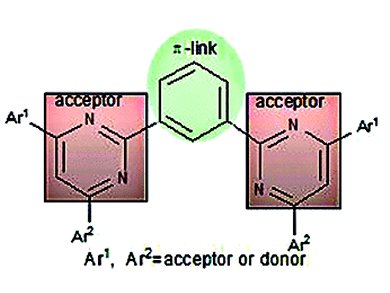Two-photon absorption (TPA) materials have gained interest because of their potential applications in optical communication, optical limiting, 3D optical data storage, and up-converted lasing. Compared with inorganic TPA materials, organic two-photon materials have some advantages, such as large absorption coefficients, fast response times, and modifiable chemical structure. Thus, new compounds with strong TPA properties are crucial in order to fully realize potential applications.
Hongjun Zhu, Nanjing Tech University, China, and colleagues have designed, synthesized, and characterized seven multi-dipole and multibranched benzene-linked bispyrimidine derivatives containing a two-layer binary tree structure with different electron donor and acceptor groups. UV/vis spectra (lAbs max =311–371 nm) revealed low optical band gaps (2.98–3.61 eV). The photoluminescence (PL) emission spectra (lEm max = 386–527 nm), stokes shift (2864–6414 cm–1), and the fluorescence quantum yields (Ff) in different solvents suggest that these compounds may be used as solvatochromic materials. Their photophysics and transient difference absorption properties as well as DFT calculations suggest these compounds may be used as optical limiting material.
- Synthesis, Photophysics, and Electronic Structures of Benzene-Linked Bispyrimidine Compounds,
Guangliang Song, Rui Liu, Guangke He, Shidong Yuan, Hongjun Zhu,
Asian J. Org. Chem. 2015.
DOI: 10.1002/ajoc.201500009




